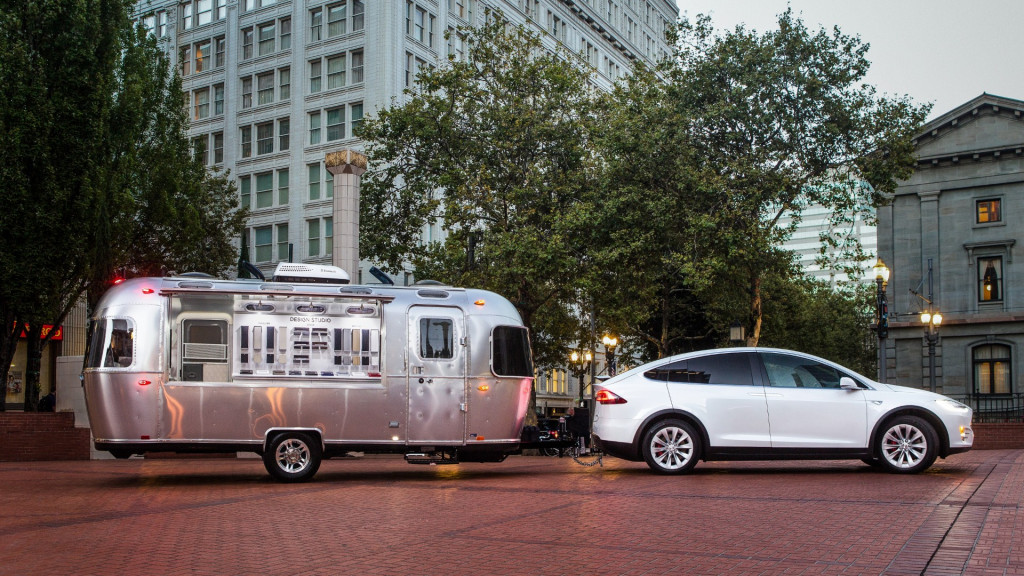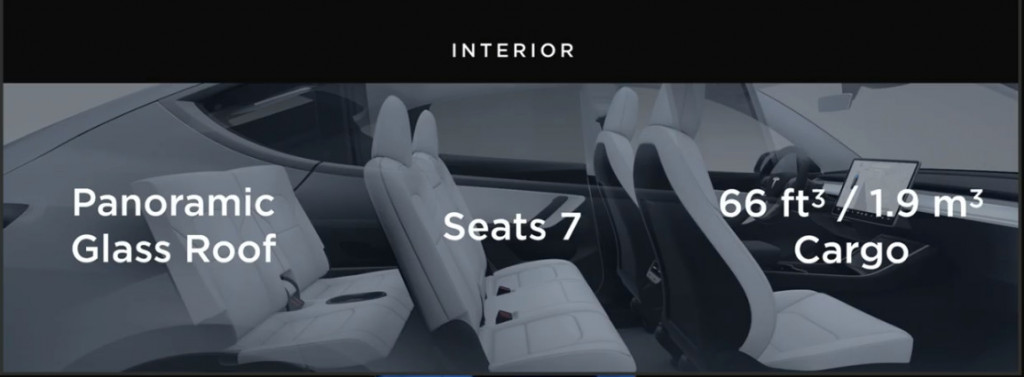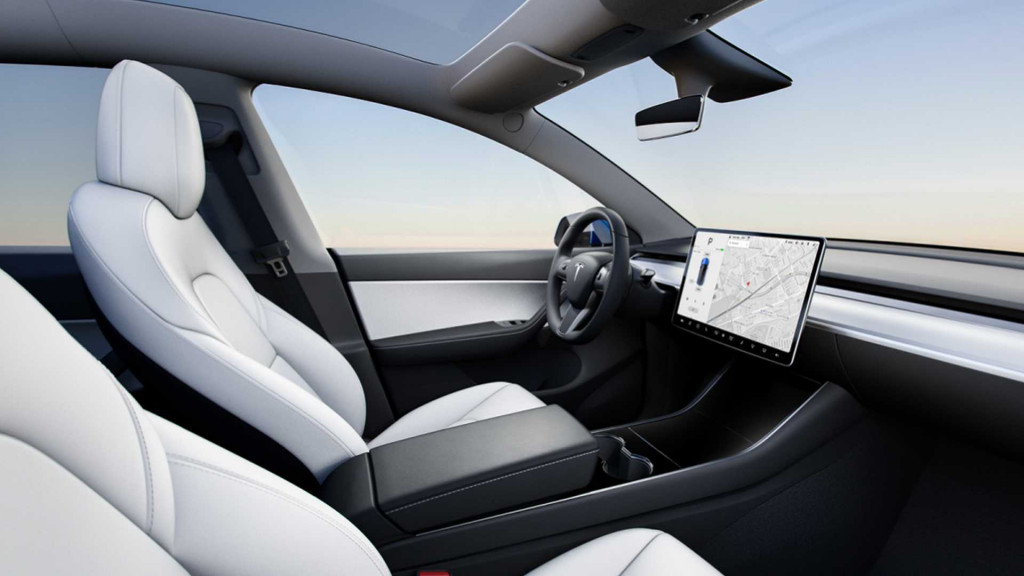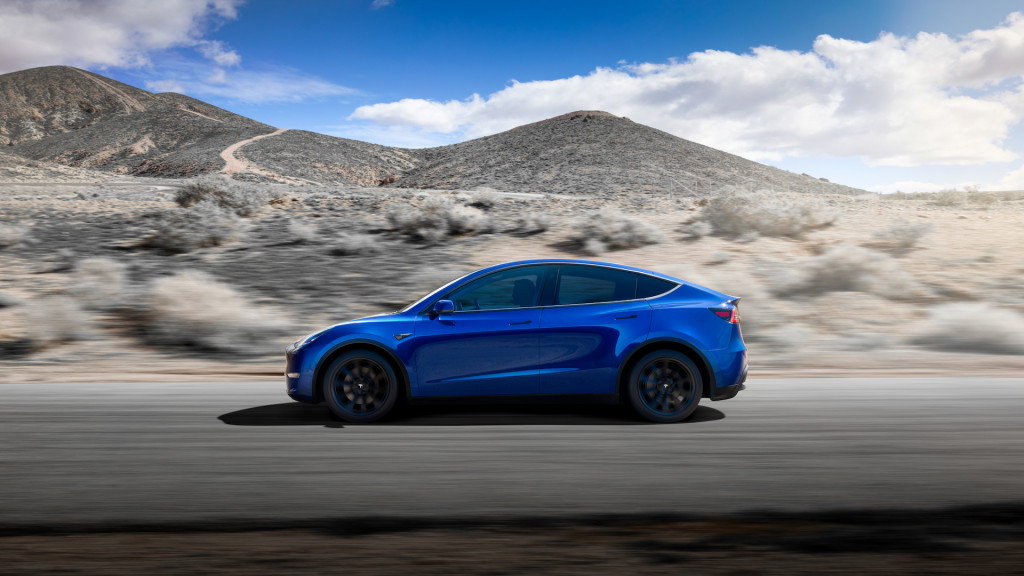Even as Tesla started to make its first confirmed deliveries of the Model Y electric crossover, on Friday, the level of official information on this new and eagerly anticipated model remained sparse.
With Tesla still lacking an official specs panel on its order site—or a press kit—for the Model Y, beyond essentially the same preliminary information that had been revealed last March (all subject to change), many looked to projections that have been posted in forums and some owners likely took delivery of a car that hadn’t yet been precisely defined.
Green Car Reports was relieved to find on Friday a source, at last, for the basics: the Model Y owner’s manual. It largely confirms exactly what Tesla has promised along the way—a vehicle that largely parallels the Model 3, with a slightly taller body, a little more ground clearance, and some added features that place it in the crossover and utility-vehicle category.
Towing: A solid ‘no,’ at least for now
But there’s one significant exception. “Model Y is not equipped with towing,” the U.S. owner’s manual says—a limitation that might catch some Model Y buyers by surprise given the Model X’s 5,000-pound rating and respected towing prowess in the EV arena.

Tesla Model X towing
Given the teases along the way it seemed reasonable to expect something less than Model X but something more than nothing. In 2016, Elon Musk said that there will be an official tow-hitch option for the Model 3, although none has shown up. The Model Y prototype Tesla revealed last year had what appeared to be a tow-hitch receiver cover plate. And in the past several years, Model 3 and Model Y test vehicles with manufacturer plates have been spotted towing.
The Audi E-Tron can tow up to 4,000 pounds. And Polestar late last year confirmed that its Polestar 2 electric hatchback will be rated to tow 3,300 pounds—capability that we can likely expect to carry over to both the Volvo XC40 Recharge and Polestar 3 electric crossovers. However, none of the front-wheel-drive rivals like the Nissan Leaf, Chevrolet Bolt EV, or Kia Niro EV are rated for towing, and neither the Jaguar I-Pace nor the upcoming Ford Mustang Mach-E—at least in the U.S.—come with tow capability.
Puzzling over pounds: Is Model Y really a hauling lightweight?
One other thing there’s no mention of in the manual is the Model Y’s expected seven-passenger capability—via two flip-up third-row seats. That just requires a little more patience; Tesla has reportedly already told those who’ve placed orders for seven-seat versions they’ll have to wait until 2021.
In a quick scan of the weight numbers, the Model Y’s vehicle capacity weight—including driver, passengers, and cargo—of just 954 pounds is lower than that of the Model 3 and surprisingly (verging on alarmingly) small, given a curb weight 4,416 pounds for the Long Range Dual Motor and Long Range Performance Dual Motor versions, with GVWR at 5,302 pounds.

Tesla Model Y
That means that if you have five adults aboard the Model Y, and they average 190 pounds, any suitcases or bags of groceries in the cargo area will put you over its maximum capacity. To compare, the five-passenger Jag I-Pace leaves 1,102 pounds for passengers and cargo while the Model X leaves 1,347 pounds.
It does beg the question of, whether to keep under weight limits, are the seven-passenger layout and the Long Range pack—likely a scale-topping combination—mutually exclusive?
Great goods for the great outdoors
Being able to go off-pavement a little bit is an assumption for nearly any crossover, and it looks like the Model Y won’t disappoint. It has a Slip Start feature just like other Teslas, and it adds a new Off-Road Assist mode that balances torque between front and rear motors while also allowing the wheels to spin—potentially saving owners from getting stuck in situations where one side of the vehicle is on something very slippery, like ice. Tesla also notes that the accelerator is calibrated to apply more gradual torque—useful in low-speed creeping over rocky surfaces or in delicate traction situations.
Camp Mode has been out for some time, but it seems intended for the more activity-oriented Model Y. The feature allows the use of the touch screen, personal electronics, and climate control, as long as the battery’s charge level is at 20 percent or more.
Solving a different puzzle, perhaps
Another surprise is the heat pump that’s apparently included in all Model Y versions, which Tesla notes in the owner’s manual is there to “maximize efficiency” That’s quite a turnaround; Tesla has previously boasted that because they’ve done such a good job in other efficiency areas they don’t need the added weight and complexity.

Tesla Model Y
Heat pumps we’ve observed to be a real boon to efficiency for longer drives in the type of milder cool weather like you might see from the Bay Area up to the Pacific Northwest, when such a system can cut down the use of resistive heat. That may finally answer our mystery about how the heavier Model Y ended up with a better city efficiency rating than the Model 3.
More details, final numbers at last for Model Y vs. Model 3
Now for some of the other specs that Tesla has been reluctant to release so far: The Model Y has an overall length of 187 inches (2.2 inches longer than the Model 3), a width of 75.6 inches (77.9 with mirrors folded), and a height of 63.9 inches with the coil-spring suspension—considering a ground clearance of 6.6 inches (up from 5.5 inches for the Model 3).

Tesla Model Y
Wheelbase is 113.8 inches—0.6 inches longer than that of the Model 3—and ground clearance with the coil-spring suspension is 6.6 inches. That adds up to a difference of 6.5 inches in actual body height between the Model Y and Model 3. Total rated cargo room for the Model Y is 68 cubic feet (a little larger than what had been previously cited), versus about 44 cubic feet for the Model 3 with the seats folded down.
The Model Y has a 9:1 fixed-gear motor reduction ratio across both axles, 2.0 turns of the steering wheel lock-to-lock, and a 39.8-foot turning circle. Braking is handled by four-piston calipers in front in both versions, with Performance versions getting thicker brake rotors front and rear.
If the rollout of information on the Model 3 was any gauge, thus starts a long procession of details on what could be Tesla’s best-selling vehicle in the near future.
